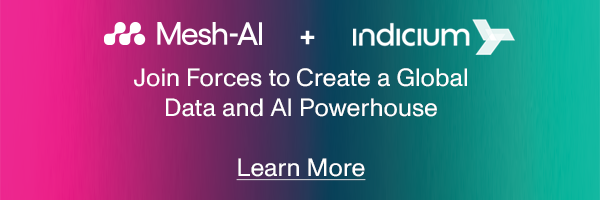


Data-driven decision making is no longer a nice-to-have for enterprise organisations, but a must-have for survival in today's fast-paced, data-driven world.
To gain a competitive advantage, improve operational efficiency and drive growth, organisations need to leverage data insights and analytics which is why many are exploring digital twin capabilities as a solution.
But what exactly is a digital twin and how can it transform your business?
It consists of data, models and algorithms that mirror the attributes and functions of the actual object or system, meaning it can provide insights into how it operates and how it can be improved – without any risk to the day-to-day business processes. This digital replica is crucial for organisations to understand and predict the performance of their systems in various scenarios.
- They can help to improve understanding of physical systems and predict how they will perform under different conditions.
- Data from the digital twin can be analysed to predict when maintenance is required for a physical system, which will help to reduce the risk of costly unexpected failures and downtime.
- The data can be utilised to identify new ways to work to help optimise operations and improve overall efficiency.
- The real-time data and simulations provided by digital twins can allow organisations to make informed decisions based on accurate and up-to-date information. This can be particularly useful for what-if scenario planning and impact analysis exercises.
- By simulating interactions with consumers, digital twins can improve customer experience, identify opportunities for innovation and help to boost satisfaction and retention.
While historically digital twins have been linked to manufacturing and IoT based industries, we are now seeing adoption across multiple sectors including financial services, energy and utilities.
Financial organisations are creating digital twins of their banking operations which allow them to simulate and test various scenarios and stress tests in a virtual environment without any risk of disruption to BAU.
The data produced by the digital twin can help them to simplify and streamline regulatory reporting and operational risk planning efforts, which in turn leads to improvements in risk management posture, reduced costs, and increased speed and accuracy when it comes to decision making.
Financial organisations are also leveraging customer interactions data from digital twins to test and optimise consumer journeys, which over time will help to reduce the costs associated with physical testing and the implementation of changes.
In the energy sector, BP has invested in building a digital twin of their upstream operations to help optimise production, reduce downtime and improve the efficiency of their operations.
Digital twin technology is also playing a crucial role in BP’s commitment to transition to net zero carbon by 2050 or sooner and they’ve stated it could reduce emissions by around 500,000 tonnes of CO2 equivalent every year if followed across their operational assets.
Rolls-Royce has also used digital twin capabilities to unlock carbon efficiencies for customers that equates to 22 million tons of carbon to date.
The benefits are numerous – from improved efficiency and reduced costs to increased customer satisfaction and enhanced regulatory compliance.
As more organisations adopt digital twin technology we will see further innovation and growth that will lead to more exciting developments in this field for many years to come.
Interested in seeing our latest blogs as soon as they get released? Sign up for our newsletter using the form below, and also follow us on LinkedIn.
